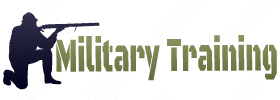
Target Practice
-
Appearance Of Objects
Become familiar with the effect which the varying conditions of light, background, etc., have upon the apparent distance of the object. Don't be content to memorize the following data, but go after the underlying reason in each case. Objects se... Care Of The Rifle
Keep the metal part of your rifle covered with a thin coating of light oil; 3-in-1 oil is ordinarily used. This is especially important in damp weather. Always clean the bore from the breech. This avoids injuring the muzzle. The pull through (a... Elevation
General rule for changing the elevation after hitting the target: A change of elevation either up or down, of 100 yards on your rear sight, will raise or lower your bullet in inches on the target equal to the square of your distance in yards from ... Estimating Distance
Suppose you are out hunting, and that you see a big buck on a distant hill. Suppose that it is exactly 600 yards distant from you, that you are an expert shot, and that you set your sights at 400 yards and fire. Will you hit the deer or not? You m... Estimating Distance Test
This test is usually held after the record firing on the range has been completed. No distance used in this test will be less than 547 yards (battle sight range) or more than 1200 yards, which is considered the extreme range for effective fire of ... Estimating Distances By Sound
Sound travels at the rate of about 366 yards a second. Therefore, multiply the number of seconds intervening between the flash of the gun and the report of the same by 366, and the product will be the distance in yards to the gun. ... General Hints And Cautions
1. Don't be afraid of the kick; it is more imaginary than real when the sling is properly used, your shoulder properly padded, and the gun properly held. 2. Rest your cheek, not your jaw bone, lightly against the small of the stock. 3. Rest ... Hints On Rapid Fire
1. When you go to the firing point get two clips of cartridges, one to be used at the command load and the extra one is placed in the belt. 2. See that your cut-off is up. 3. When the target first appears drop quickly into the required positio... Methods Of Estimating Distances By The Eye
1. Decide that the object cannot be more than a certain distance away, or less than a certain distance. Keep the estimate within the closest possible limits and take the mean of the two estimates as the range. For instance, that deer cannot be ove... Miscellaneous Information
The Bayonet. The bayonet is a cutting and thrusting weapon consisting of three principal parts, viz., the blade, the guard, and the grip. The weight of a bayonet is 1 pound. Captain B. A. Dixon, retired, has compiled the following interesting d... Preliminary Instruction
Your preliminary instructions and their purposes are as follows: 1. Nomenclature of the Rifle. The word nomenclature means the vocabulary of names or technical terms which are appropriate to any particular topic. In this case the topic is the ri... Range-finding Instrument
Each company is equipped with a range-finding instrument. All company officers and sergeants should be proficient in using it. The accuracy of this instrument will greatly depend upon the skill of the user, and the visibility of the objective. ... Rapid Fire
In rapid fire the battle sight is always used; the firing is against time and at a field target (Target D), and from ranges 200, 300, and sometimes 500 yards. The battle sight corresponds to an elevation of 547 yards, which makes it necessary f... Rapid Fire Target
This target is always used with the battle sight at 200, 300, and 500 yards rapid fire. Battle sight is the position of the rear sight when the leaf is laid down, which is the habitual position of the rear sight leaf at drill. It is an open sigh... Returning
A patrol can never be certain that the enemy's patrols are not operating in its rear. Hence in returning, it is necessary to observe the usual precautions. If the patrol has eluded the enemy, it is best to return over a route other than that over ... Slow Fire
Following satisfactory gallery practise scores the men go on the range for known distance practice. Here the army rifle is fired with service charges at known ranges; first, for instruction if time permits, and then for record. To obtain satisfact... Slow Fire Targets
This target is used during slow fire at 200 and 300 yards. This target is used during slow fire at 500 and 600 yards. ... Target Practice
Military shooting or target practice is very different from shotgun shooting, or even the kind of shooting required of a large-game hunter; therefore we should begin with the most elementary instruction and drills, if proficiency is to be obtain... Trial Shots Or Volleys
If the ground is so dry and dusty that the fall of the bullets is visible through a glass or with the naked eye, a method of determining the distance is afforded by using a number of trial shots or volleys. The method of using trial volleys is as ... Windage
The rear sight is set on a movable base so that it can be moved to the right or left and the aiming point shifted accordingly in order to counteract the effect of the wind on the bullet. General Rule. To shift the striking point of the bullet to...